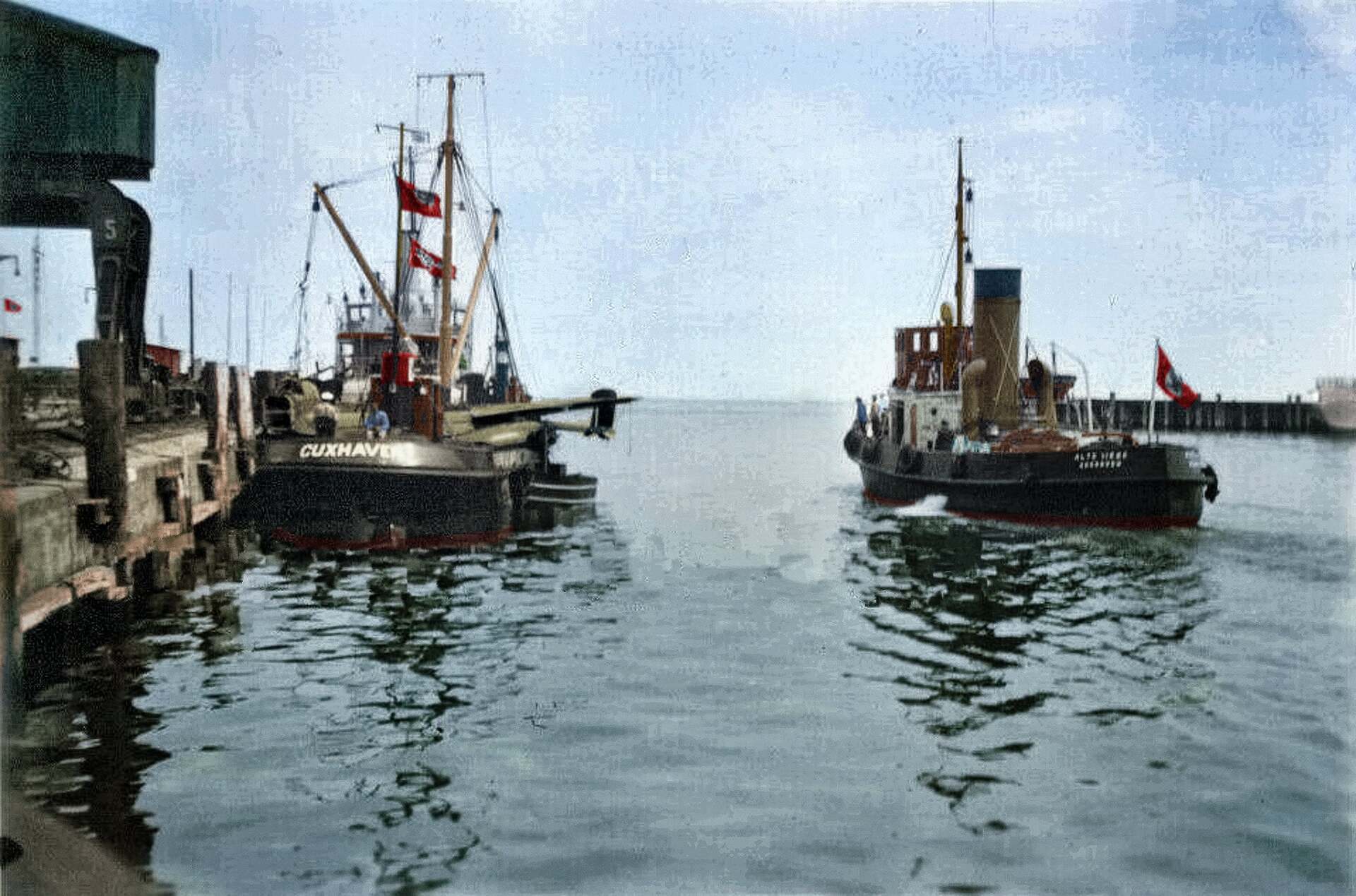
On June 30, 1940, a British bomber of the type 'Handley Page HP52 Hampden' was shot at by naval anti-aircraft guns near Wesermünde and crashed into the Wadden Sea off Spieka-Neufeld. The plane was recovered by the local salvage company Taucher Otto Wulf and brought to Cuxhaven. The wreckage was unloaded in the old harbor using the crane from the Beckmann shipyard and taken away in military trucks for examination. The plane was a Royal Air Force plane, registration: QR-S, Reg. No.: P4356, Squadron No. 61. Two crew members were captured, two others were discovered dead in their parachutes near Knechtsand.

The photo shows the Wulf Berge pontoon moored to the inner edge of the "Alte Liebe". On the right in the picture is the ship "Alte Liebe", which supported the operation as a tug. Source: Photo and text by Klaus Frodees

The second photo shows the pontoon under the crane at Beckmannwerft, where the aircraft wreck was unloaded with the help of a lot of personnel. The aircraft cockpit is already loaded onto the truck. Source: Photo and text by Klaus Frodees

The Handley Page HP52 Hampden was a twin-engine bomber manufactured by the British Handley Page Aircraft Company. 1,430 of these aircraft were built between 1936 and 1941. They were used as bombers during the first years of the war. The first of these twin-engine aircraft were delivered from September 1938. Bomber Squadron 49 received the first aircraft of this type. After the start of the war, the aircraft's original rectangular fuselage nose was replaced by a molded plastic dome for the bombardier, who also operated a bow machine gun. The rear gun emplacement was also modified. The Bristol Pegasus PE 5S(a) engines were replaced by more powerful Pegasus XVIIIs. Despite these changes, the aircraft was disappointing in service, and the cramped space in the slim fuselage contributed to the rapid fatigue of the four-man crew.
In addition, the defensive armament's field of fire was too small. Later attempts to improve the armament by installing twin weapons brought only modest success. However, the Hampden was still used as a bomber until September 1942, mainly as a night bomber or minelayer. Coastal Command used the type for a year longer as a torpedo bomber and reconnaissance aircraft. Hampdens took part in the first attacks on Berlin in June 1940 and in the 1,000-bomber attack ("Operation Millennium") on Cologne at the end of May 1942. In May 1941, Hampdens were also involved in the attack on the 'Scharnhorst' and 'Gneisenau', which were in the port of Brest. The last use by Bomber Command was on the night of 14/15 September 1942 against Wilhelmshaven.
Claus FrodeesThank you for this interesting article, MB.


